| << Chapter < Page | Chapter >> Page > |
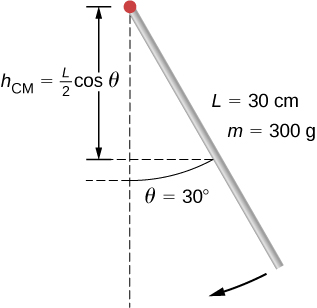
At the top of the swing: . At the bottom of the swing,
At the top of the swing, the rotational kinetic energy is . At the bottom of the swing, . Therefore:
or
Solving for , we have
Inserting numerical values, we have
If a child walks toward the center of a merry-go-round, does the moment of inertia increase or decrease?
A discus thrower rotates with a discus in his hand before letting it go. (a) How does his moment of inertia change after releasing the discus? (b) What would be a good approximation to use in calculating the moment of inertia of the discus thrower and discus?
a. It decreases. b. The arms could be approximated with rods and the discus with a disk. The torso is near the axis of rotation so it doesn’t contribute much to the moment of inertia.
Does increasing the number of blades on a propeller increase or decrease its moment of inertia, and why?
The moment of inertia of a long rod spun around an axis through one end perpendicular to its length is . Why is this moment of inertia greater than it would be if you spun a point mass m at the location of the center of mass of the rod (at L /2) (that would be )?
Because the moment of inertia varies as the square of the distance to the axis of rotation. The mass of the rod located at distances greater than L /2 would provide the larger contribution to make its moment of inertia greater than the point mass at L /2.
Why is the moment of inertia of a hoop that has a mass M and a radius R greater than the moment of inertia of a disk that has the same mass and radius?
While punting a football, a kicker rotates his leg about the hip joint. The moment of inertia of the leg is and its rotational kinetic energy is 175 J. (a) What is the angular velocity of the leg? (b) What is the velocity of tip of the punter’s shoe if it is 1.05 m from the hip joint?
Using the parallel axis theorem, what is the moment of inertia of the rod of mass m about the axis shown below?
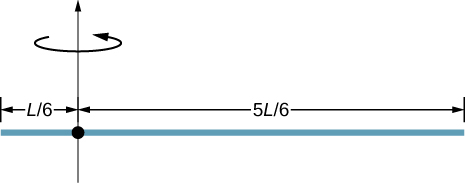
Find the moment of inertia of the rod in the previous problem by direct integration.
A uniform rod of mass 1.0 kg and length 2.0 m is free to rotate about one end (see the following figure). If the rod is released from rest at an angle of with respect to the horizontal, what is the speed of the tip of the rod as it passes the horizontal position?
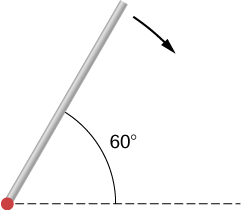
A pendulum consists of a rod of mass 2 kg and length 1 m with a solid sphere at one end with mass 0.3 kg and radius 20 cm (see the following figure). If the pendulum is released from rest at an angle of , what is the angular velocity at the lowest point?
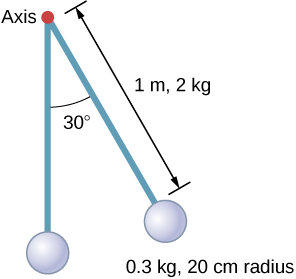
A solid sphere of radius 10 cm is allowed to rotate freely about an axis. The sphere is given a sharp blow so that its center of mass starts from the position shown in the following figure with speed 15 cm/s. What is the maximum angle that the diameter makes with the vertical?
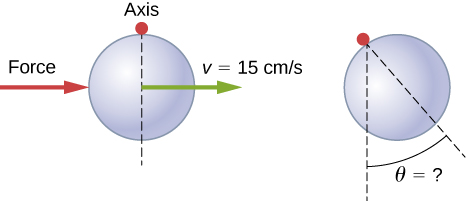
Calculate the moment of inertia by direct integration of a thin rod of mass M and length L about an axis through the rod at L /3, as shown below. Check your answer with the parallel-axis theorem.


Notification Switch
Would you like to follow the 'University physics volume 1' conversation and receive update notifications?